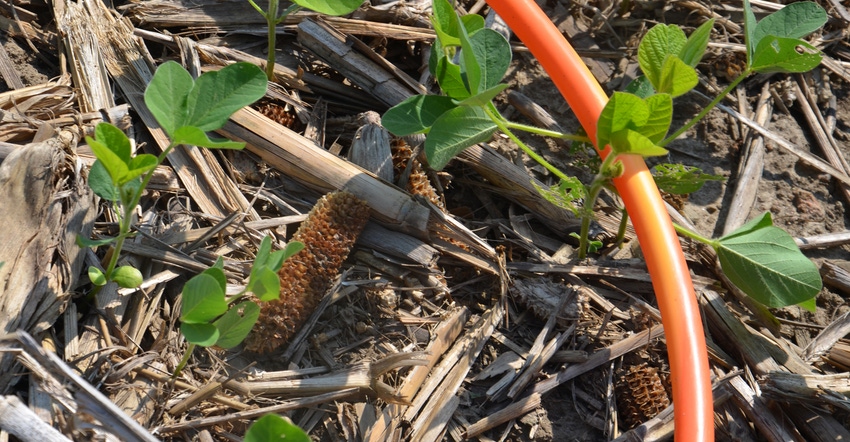
You planted soybeans early. Most fields are OK, but three fields bother you. Average stands in 15-inch rows are 80,000, 70,000 and 60,000 plants per acre. Spacing is tolerable and your herbicide program will handle weeds. What should you do?
Steve Gauck, a regional agronomy manager for Beck’s based near Greensburg, Ind., would want to walk each field to make the best decision. However, here are his general thoughts based on experience and Beck’s Practical Farm Research studies.
Related: Remember to scout early-planted soybeans
“As long as there aren’t big skips and you can control weeds, I typically don’t hesitate to recommend keeping stands of 80,000 plants per acre,” Gauck says. “The bottom line is, I don’t worry about fields with 80,000 plants per acre.”
New findings
Based on a PFR trial in 2020, Gauck says you might drop that goal post to 70,000 plants per acre, assuming there is still reasonably even distribution, and you can control weeds.
In a trial repeated in central Indiana, Kentucky and Ohio, sporadic stands of 89,863 and 71,793 plants per acre, planted from April 21 to May 13, yielded better and provided an economic advantage compared to replanting during May 26 to June 3. The replanted population was 135,520 plants per acre.
In fact, even with soybean prices at $9.13 per bushel, in line with 2020 pricing, the advantage for leaving the 71,000 plant stand vs. replanting later was over $35 per acre. Leaving the stand of nearly 90,000 vs. replanting netted over $64 per acre.
The same study included even thinner stands. For both 60,177 plants per acre and 48,400 plants per acre, planted in the early window, it paid to replant, even as late as the May 26 to June 3 window. Note that the replant population was on target. There is no guarantee that replant populations will always turn out favorably.
Losses for the original early-planted stands of 60,000 and 48,000 vs. replanting, with beans at $9.13 per bushel, were $15.17 and $66.30 per acre, respectively.
So, you may decide to leave your 80,000 and 70,000 population fields. What about the field with 60,000? Based on the 2020 trial just mentioned, it appears it would pay to replant if you can do so by June 3 with the potential for a good stand.
Spotting in
You might also look at another option for that field, Gauck says. The Beck’s PFR team conducted a separate study in 2020 where they compared spotting in more seed to keeping an original, sporadic stand vs. completely replanting the field.
This study was repeated at three locations: central Indiana, southern Illinois and Ohio. Results were combined and averaged. Leaving the original stand of 66,351 plants per acre planted in a window between May 1 and May 13 produced 55.5 bushels per acre. Replanting during May 26 to June 2 and achieving over 143,000 plants per acre produced 56.3 bushels, but it was a $17.70 loss per acre vs. accepting the original stand.
The teams also spotted in 60,000; 80,000 and 100,000 seeds per acre, respectively. Yields were 59, 60.4 and 62.2 bushels per acre, respectively. ROI for spotting in more seed was $16.95, $29.73 and $46.17 per acre, respectively.
“With final sands in the 60,000 plants per acre range, spotting in provided a positive return in 2020,” Gauck observes.
About the Author(s)
You May Also Like




